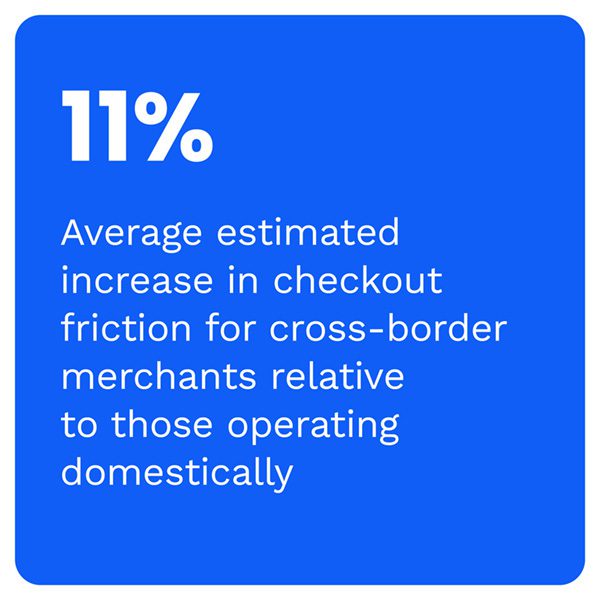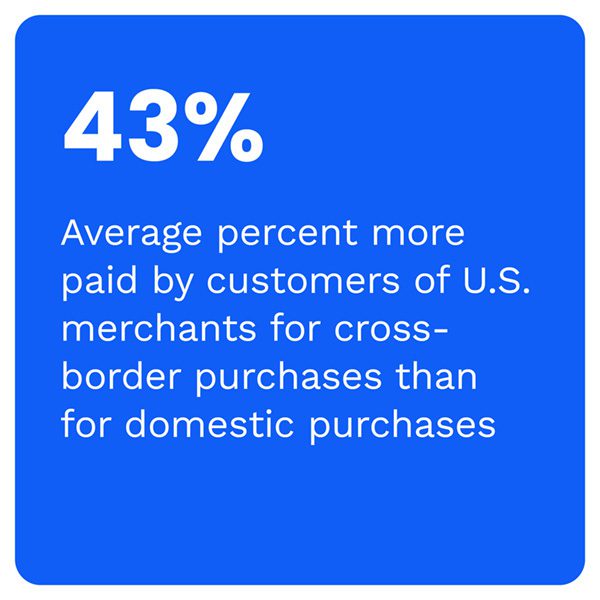The pandemic continues to shift the mindsets of merchants and consumers alike, resulting in a proliferation of online marketplaces and a greater number of digital transactions around the world.
eCommerce sales have spiked considerably in the past 20 months, and 43% of customers now agree or strongly agree that they will continue making purchases via online platforms in the future, according to a survey. Consumers remain wary of purchasing from foreign merchants, however, with the majority of respondents citing extra fees as their primary concern.
 There are several ways for merchants to ease consumers’ worries, however. Cross-border cryptocurrency transactions are a promising solution, as they allow customers to waive foreign transaction fees and are significantly faster than many other cross-border payment types. Buy now, pay later (BNPL) is another appealing solution for customers around the globe, and 54% of online shoppers say it would increase their willingness to shop at foreign retailers. Diving into the international market requires a multifaceted approach. It is crucial for retailers looking to expand their businesses into different geographical regions to consider their customers’ unique expectations and payment preferences.
There are several ways for merchants to ease consumers’ worries, however. Cross-border cryptocurrency transactions are a promising solution, as they allow customers to waive foreign transaction fees and are significantly faster than many other cross-border payment types. Buy now, pay later (BNPL) is another appealing solution for customers around the globe, and 54% of online shoppers say it would increase their willingness to shop at foreign retailers. Diving into the international market requires a multifaceted approach. It is crucial for retailers looking to expand their businesses into different geographical regions to consider their customers’ unique expectations and payment preferences.
In the latest “Cross-Border Retail Payments Tracker®,” PYMNTS examines how international retailers can boost eCommerce revenue and increase customer loyalty by tailoring their payments technology to meet the demands of each market they serve.
Around the Cross-Border Retail Payments Space
Meeting consumers’ various payment demands is not  as straightforward as it may seem. Customers expect various options when completing online transactions, but facilitating alternative payment methods for merchants can be a complex process for payment service providers (PSPs). With cross-border eCommerce values primed to reach $6.9 trillion by 2025, many organizations are innovating their payments technology to meet the needs of international customers. Companies with payments platforms are ultimately improving their understanding of local payment preferences, regional payment methods and regulations to better cater to each market.
as straightforward as it may seem. Customers expect various options when completing online transactions, but facilitating alternative payment methods for merchants can be a complex process for payment service providers (PSPs). With cross-border eCommerce values primed to reach $6.9 trillion by 2025, many organizations are innovating their payments technology to meet the needs of international customers. Companies with payments platforms are ultimately improving their understanding of local payment preferences, regional payment methods and regulations to better cater to each market.
Officials work diligently to regulate the global payments space to ensure a smoother cross-border eCommerce experience for merchants and their customers. At a recent event, International Monetary Fund (IMF) Director Kristalina Georgieva advised global policymakers that streamlining cross-border regulations could increase the use of cross-border technology. She explained that cross-border payments are unattractive to some consumers because they often lack transparency and cost more in fees than domestic purchases. As cross-border transactions gain momentum in the eCommerce marketplace, finding a solution to these pain points is time-sensitive and crucial to maintaining the growth trajectory of cross-border payments.
For more on these and other stories, visit the Report’s News & Trends.
Brazilian Bundle Me on How Regional Payment Preference Adoption Is Increasing Cross-Border Sales
The cross-border eCommerce space’s growth during the pandemic opened many doors for  retailers looking to expand their businesses geographically. Each region has preferred ways to pay, however, an important factor that global companies must consider to ensure customer satisfaction and loyalty.
retailers looking to expand their businesses geographically. Each region has preferred ways to pay, however, an important factor that global companies must consider to ensure customer satisfaction and loyalty.
Na’Imah Muhammad, owner of wig and hair extension retailer Brazilian Bundle Me, recognized the opportunities that recent cross-border success posed for her business and innovated its payments technology accordingly, ultimately leading to an uptick in foreign sales.
To learn more about why cross-border eCommerce merchants should consider the payment preferences of the markets they serve, visit the Report’s Feature Story.
Deep Dive: Individualized Payment Options Are Essential to Cross-Border eCommerce Growth
Consumers who made purchases online during the pandemic have grown more comfortable shopping via digital channels and are now more open to conducting cross-border transactions than before. Businesses that want to increase their chances of success in the cross-border eCommerce space should therefore consider implementing a slew of popular payment options based on the regional preferences of their customer bases.
To learn more about how alternative payment options drive customer satisfaction rates globally, visit the Report’s Deep Dive.
About the Tracker
The “Cross-Border Retail Payments Tracker®,” done in collaboration with Citcon, examines the latest developments in cross-border retail payments.

